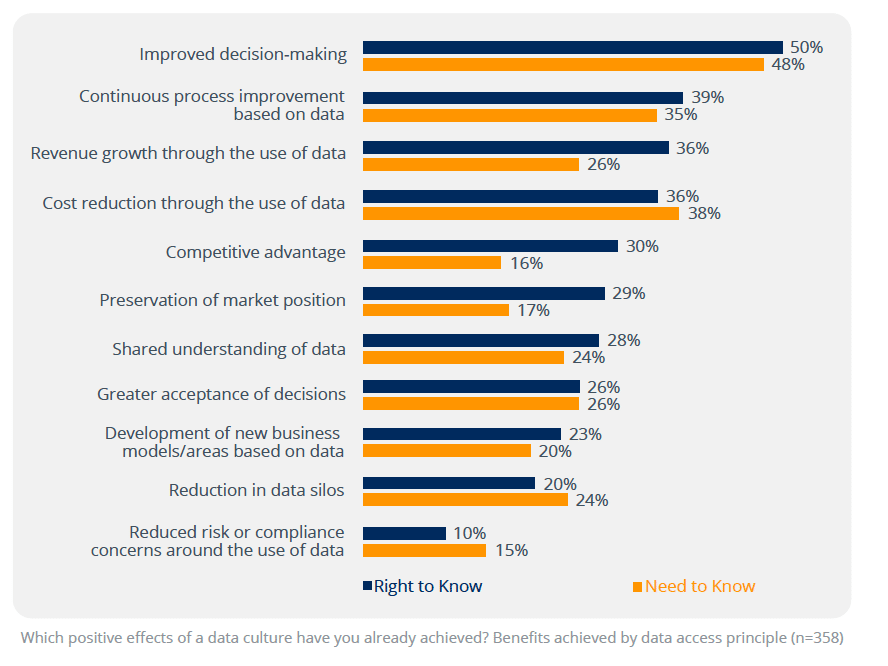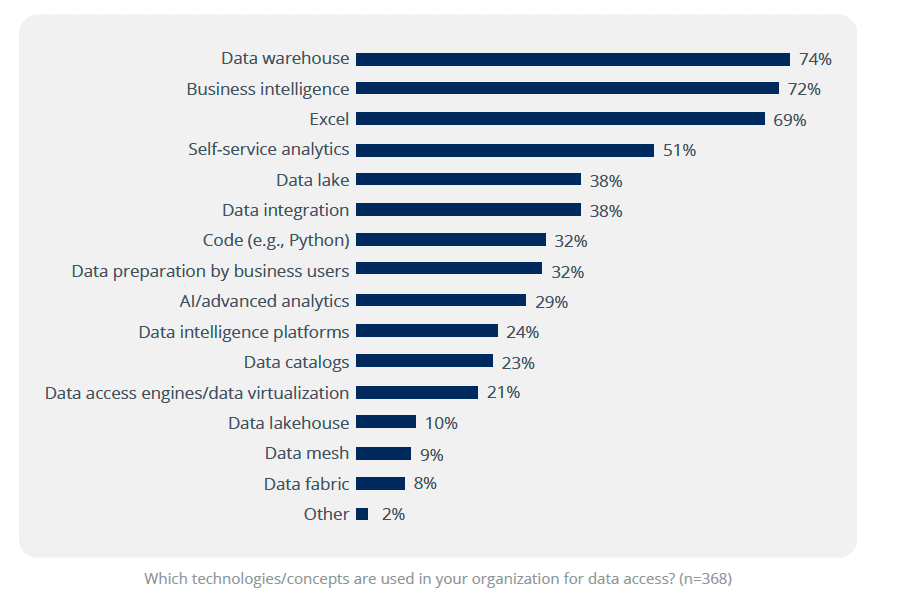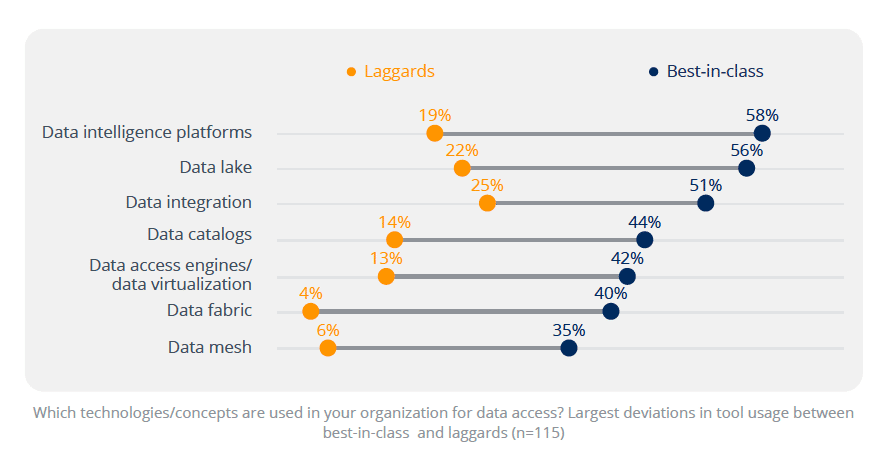Data-Driven Data Access – BARC Data Culture Survey 23
Actian Corporation
February 8, 2023

In last year’s BARC Data Culture Survey 22, “data access” was selected as the most relevant aspect of BARC’s ‘Data Culture Framework’. Therefore, this year, BARC examined the current status, experiences, and plans of companies concerning their efforts to create a positive data culture with a special emphasis on ‘data access’.
The study was based on the findings of a worldwide online survey conducted in July and August 2022. The survey was promoted within the BARC panel, as well as via websites and newsletter distribution lists. A total of 384 people took part, representing a variety of different roles, industries, and company sizes.
In this article, discover the findings regarding enterprise data access of BARC’s Data Culture Survey 23.
“Right-to-Know” vs. “Need-to-Know” Principles
53% of best-in-class* companies rely on the right-to-know principle. But only 24% of laggards concur.
In their study, BARC describes two principles that can be observed regarding data access: Need-to-know refers to a more restrictive approach, where users must ask for authorization to access data. In contrast, the right-to-know model refers to the propagation of a data democracy, where data access is free for all employees, limited only by intentionally restricted data (e.g., secret, personal, or similar data).
The need-to-know approach has always been the predominant model for data access, with 63 percent of participants confirming that this approach prevails in their organization. However, significantly more than half of the sample consider the Right-to-know to be the most beneficial model.
For many respondents, however, there is still a significant gap between their wishes and reality. Right-to-know is practiced mainly by small companies. This is not surprising due to their simple and flat organizational structures and straightforward communication channels. In fact, BARC found that as the size of a company increases, so does its organizational complexity and the demands on data governance. The need-to-know principle tends to prevail in this case.
Companies that predominantly practice the right-to-know principle believe that they generate greater benefits from data than companies adopting need-to-know. For example, they report a much higher rate of achievement when it comes to gaining a competitive advantage, preserving market position, and growing revenue.

The Technologies and Tools Associated With Data Access
It is no secret: data access requires technical support. According to BARC, around two-thirds of the companies surveyed use traditional data warehousing and BI technologies. And 69 percent use Excel and 51 percent use self-service analytics tools. These figures aren’t surprising If the objective is to solve these challenges with existing enterprise tools.
It is worth mentioning that 32 percent use code to manage data access, which corresponds to BARC’s general market perception that languages such as Python are gaining a stronger foothold in the enterprise data landscape.
In turn, the need for transparency to be able to find data, features, and algorithms in an uncomplicated manner and to integrate them securely is also increasing. Thus providing the breeding ground for software providers to offer new solutions that help to manage and monitor code in order to have a controlled and monitored process.

The survey shows that there is a great deal of catching up to do in terms of technologies for data access. Fewer than 25 percent of the companies surveyed use data intelligence platforms or data catalogs. However, it is precisely these solutions that help to compile knowledge about data outside of the BI context, across systems, and make it analyzable, thus addressing the main challenges to data access.
The importance of data knowledge has been recognized above all by best-in-class* companies. 58 percent use data intelligence platforms, compared with only 19 percent of laggards*.

The Lack of Competence in New Technologies
Of course, technology is only half the solution to data access problems. As mentioned in a previous article, many challenges have their origin in a lack of strategy or organization.
The added value of technologies for increasing data access is limited. Only just over half succeed in improving data access through BI and data warehouse technologies, and only one in three companies manage it with self-service analytics tools.
Data virtualization tools, data intelligence platforms, and data catalogs play a remarkable role in the technical support of data access. These tools can clearly add value, but BARC states that there is probably a lack of knowledge and training to be able to use them extensively.
Indeed, 39 percent of respondents complain about a lack of skills as the second most common obstacle to data access.
*The sample was divided into ‘best-in-class’ and ‘laggards’ in order to identify differences in terms of the current data culture within organizations. This division was made based on the question “How would you rate your company’s data culture compared to your main competitors?”. Companies that have a much better data culture than their competitors are referred to as ‘best-in-class’, while those who have a slightly or much worse data culture than their competitors are classed as ‘laggards’.
Subscribe to the Actian Blog
Subscribe to Actian’s blog to get data insights delivered right to you.
- Stay in the know – Get the latest in data analytics pushed directly to your inbox.
- Never miss a post – You’ll receive automatic email updates to let you know when new posts are live.
- It’s all up to you – Change your delivery preferences to suit your needs.